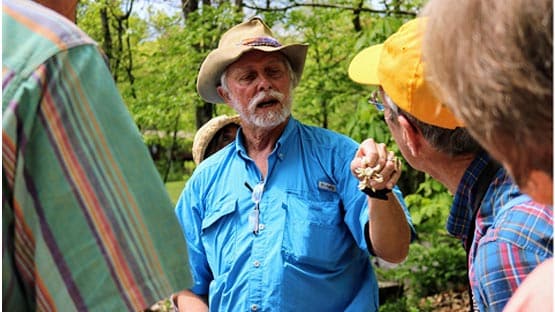
For a low-income, first-year, or transfer student in engineering, navigating the collegiate infrastructure can be just like a connect-the-dots puzzle: labyrinthian.
But thanks to a $3 million grant from the National Science Foundation, an academic team from the Department of Engineering Education is building a research hub headquartered at Virginia Tech to help untangle the network of systems that low-income engineering students face at four-year universities and community colleges. David Knight, associate professor in engineering education, will serve as lead principal investigator for the collaborative research effort.
“We have students who are just stuck in this web of campus offices,” Knight said. “We want to help enhance partnerships within institutions and their networks so procedures, collaborations, and arrangements can work better together.”
This research hub builds on prior experience with the NSF Scholarships in STEM (S-STEM) program for Virginia Tech — a grant system for funding low-income student scholarships as well as research and activities that support recruitment, retention, transfer, student success, and more.
The most recent project is the $5.4 million Virginia Tech Network for Engineering Transfer Students (VT-NETS), led by principal investigator Bevlee Watford and supported by co-principal investigators Knight and Walter Lee. VT-NETS is a collaborative effort among Virginia Tech, Virginia Western Community College, and Northern Virginia Community College to establish strong networks in support of engineering transfer students in the pathway from community college to bachelor’s degree.
Through working on VT-NETS, the team realized each institution had much to learn about the others before kicking off productive research and collaboration.
“It’s like we were speaking different languages at times,” said Knight. “There were moments during the project where we recognized if we had known something from day one, or if we knew what kinds of questions to ask about a particular organizational context or goals, then we would have been able to hit the ground running a lot quicker.”
Through the work with VT-NETS, the team was inspired to pursue a grant from one of NSF’s newest initiatives, the Scholarships in STEM Network. Virginia Tech leads one of four research hubs funded in NSF’s first round. The network is designed to connect partners across the country to create and maintain collaborations supporting low-income students, and the hubs are a critical new component of the S-STEM program to ensure these programs can broaden their impact.
“NSF thought it would be helpful to have research hubs that can look across our existing S-STEM programs and build capacity within that community, build new knowledge,” said Knight. “For our grant, we’re hoping to be a hub that will bring people together to focus on organizational issues.”
The research hub leadership team is guided by the overarching research question: How can intra- and inter-institutional partnerships be designed, built, and sustained to systematically support low-income engineering student success? To facilitate the community of practice building, the team will run its own research accelerator grant program, working with 40 S-STEM programs across the country during the duration of the grant. The hub leadership team will serve as mentors for the programs and will help the community share data, insights, and new ideas with one another.
Over the next few summers, the Virginia Tech team will host a summit for the accelerator grant teams to learn and build new knowledge on how to establish and sustain meaningful partnerships that support low-income engineering students. By bringing so many teams together, Knight hopes the group will be able to support change across the teams’ home institutions and collectively think about how to build more sustainable organizational processes.
“We’re intensely focused on the systems that students are coming into. We want to change the narrative away from the idea that we need to ‘fix’ the students,” said Knight. “Each campus office can play a critical role in supporting students, but we don’t work well enough across offices on a single campus or between campuses. We hope the hub can improve how partnerships work within and between institutions so that the whole system can work better to support students.”










